 W
WThe AgustaWestland AW109, originally the Agusta A109 is a lightweight, twin-engine, eight-seat multi-purpose helicopter built by the Italian manufacturer Leonardo S.p.A.. It was the first all-Italian helicopter to be mass-produced.
 W
WThe AgustaWestland AW109S Grand is a lightweight, twin-engine, eight-seat multi-purpose helicopter built by the Anglo-Italian manufacturer AgustaWestland. This rotorcraft has been developed from AgustaWestland AW109 by lengthening the cabin and main rotor blades with different tip design. The Agusta Grand is fitted with two Pratt & Whitney Canada PW207C engines whereas its predecessor AW109E has two Pratt & Whitney Canada PW206C engines. It originally entered service in 2005 and has since been used in various roles, including light transport, medevac, search-and-rescue, and military roles.
 W
WThe AgustaWestland CH-149 Cormorant is the Canadian Forces designation for the AgustaWestland AW101, a helicopter used for air-sea rescue in Canada. Developed as a joint venture between Westland Aircraft in the UK and Agusta in Italy, the CH-149 is a medium-lift helicopter for military applications.
 W
WThe Bell 212 is a two-blade, medium helicopter that first flew in 1968. Originally manufactured by Bell Helicopter in Fort Worth, Texas, United States, production was moved to Mirabel, Quebec, Canada in 1988, along with all Bell commercial helicopter production after that plant opened in 1986.
 W
WThe Bell UH-1 Iroquois is a utility military helicopter powered by a single turboshaft engine, with two-bladed main and tail rotors. The first member of the prolific Huey family, it was developed by Bell Helicopter to meet a 1952 US Army requirement for a medical evacuation and utility helicopter, and first flew in 1956. The UH-1 was the first turbine-powered helicopter produced for the United States military, and more than 16,000 have been built since 1960.
 W
WThe Bell UH-1N Twin Huey is a medium military helicopter. A member of the extensive Huey family, it first flew in 1969. The CUH-1N Twin Huey was the original version, first ordered by the Canadian Forces.
 W
WThe Bristol Type 171 Sycamore was an early helicopter developed and built by the helicopter division of the Bristol Aeroplane Company. The name refers to the seeds of the Sycamore tree, Acer pseudoplatanus, which fall with a rotating motion. It has the distinction of being the first British helicopter to receive a certificate of airworthiness, as well as being the first British-designed helicopter to be introduced by and to serve with the Royal Air Force (RAF).
 W
WThe Airbus Helicopters H215 is a four-bladed, twin-engine, medium-size utility helicopter developed and marketed originally by Aérospatiale, later by Eurocopter and currently by Airbus Helicopters. It is a re-engined and more voluminous version of the original Aérospatiale SA 330 Puma. First flying in 1978, the Super Puma succeeded the SA 330 Puma as the main production model of the type in 1980. Since 1990, Super Pumas in military service have been marketed under the AS532 Cougar designation. In civilian service, a next generation successor to the AS 332 was introduced in 2004, the further-enlarged Eurocopter EC225 Super Puma.
 W
WThe Eurocopter EC155 is a long-range medium-lift passenger transport helicopter developed by Eurocopter from its Dauphin family for civil aviation use. It is a twin-engined aircraft and can carry up to 13 passengers along with 1 or 2 crew, depending on customer configuration. The helicopter is marketed for passenger transport, offshore support, VIP corporate transport and casualty transport duties. In 2015, the EC155 was formally renamed to the H155, in line with Eurocopter's corporate rebranding as Airbus Helicopters.
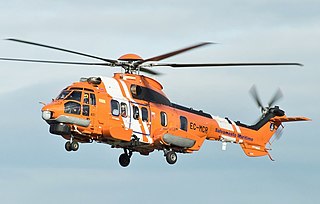 W
WThe Airbus Helicopters H225 is a long-range passenger transport helicopter developed by Eurocopter as the next generation of the civilian Super Puma family. It is a twin-engined aircraft and can carry up to 24 passengers along with two crew and a cabin attendant, dependent on customer configuration. The helicopter is marketed for offshore support and VIP passenger transport duties, as well as public service missions.
 W
WThe Eurocopter MH-65 Dolphin is a twin-engined helicopter operated by the United States Coast Guard (USCG) for medevac-capable search and rescue (SAR) and armed Airborne Use of Force missions. It is a variant of the French-built Eurocopter AS365 Dauphin.
 W
WHelicopter 66 is a United States Navy Sikorsky Sea King helicopter used during the late 1960s for the water recovery of astronauts during five missions of the Apollo program. It has been called "one of the most famous, or at least most iconic, helicopters in history", was the subject of a 1969 song by Manuela, and was made into a die-cast model by Dinky Toys. In addition to its work in support of NASA, Helicopter 66 also transported the Shah of Iran during his 1973 visit to the aircraft carrier USS Kitty Hawk.
 W
WThe Kaman HH-43 Huskie was a helicopter with intermeshing rotors used by the United States Air Force, the United States Navy and the United States Marine Corps from the 1950s until the 1970s. It was primarily used for aircraft firefighting and rescue in the close vicinity of air bases, but was later used as a short range overland search and rescue aircraft during the Vietnam War.
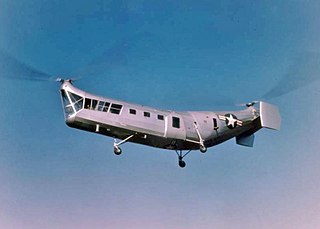 W
WThe Piasecki HRP Rescuer is a United States tandem-rotor transport or rescue helicopter designed by Frank Piasecki and built by Piasecki Helicopter. The Piasecki PV-3 was adopted as the HRP-1 Rescuer by the United States Navy, United States Marine Corps, and United States Coast Guard. An improved PV-17 variant was later produced as the HRP-2. As one of the first transport helicopters in military service, the HRP-1 was capable of carrying two crewmen and 8-10 passengers or 2,000 lb. (907 kg) of cargo.
 W
WThe Sikorsky H-19 Chickasaw was a multi-purpose helicopter used by the United States Army and United States Air Force. It was also license-built by Westland Aircraft as the Westland Whirlwind in the United Kingdom. United States Navy and United States Coast Guard models were designated HO4S, while those of the U.S. Marine Corps were designated HRS. In 1962, the U.S. Navy, U.S. Coast Guard and U.S. Marine Corps versions were all redesignated as H-19s like their U.S. Army and U.S. Air Force counterparts.
 W
WThe Sikorsky HH-52 Seaguard was a single turbine engine, three-blade rotor amphibious helicopter. Originally developed as a commercial venture by the Sikorsky Aircraft Corporation of Stratford, Connecticut, it was used by the United States Coast Guard primarily for air-sea rescue. The HH-52 has been replaced by non-amphibious types such as the HH-65 Dolphin, which rely solely on the use of a winch from a low hover to conduct rescue operations.
 W
WThe Sikorsky MH-60G/HH-60G Pave Hawk is a twin-turboshaft engine helicopter in service with the United States Air Force. It is a derivative of the UH-60 Black Hawk and incorporates the US Air Force PAVE electronic systems program. The HH-60/MH-60 is a member of the Sikorsky S-70 family.
 W
WThe Sikorsky MH-60T Jayhawk is a multi-mission, twin-engine, medium-range helicopter operated by the United States Coast Guard for search and rescue, law enforcement, military readiness and marine environmental protection missions. It was originally designated HH-60J before being upgraded and redesignated beginning in 2007.
 W
WThe Sikorsky S-61L and S-61N are civil variants of the successful Sikorsky SH-3 Sea King helicopter. They are two of the most widely used airliner and oil rig support helicopters built.
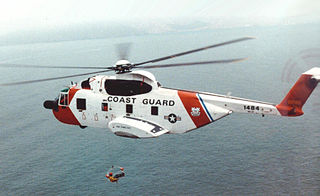 W
WThe Sikorsky S-61R is a twin-engine helicopter used in transport or search and rescue roles. A developed version of the S-61/SH-3 Sea King, the S-61R was also built under license by Agusta as the AS-61R. The S-61R served in the United States Air Force as the CH-3C/E Sea King and the HH-3E Jolly Green Giant, and with the United States Coast Guard as the HH-3F "Pelican".
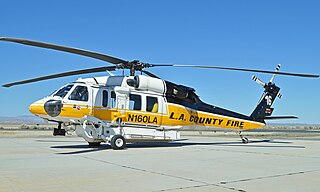 W
WThe Sikorsky S-70 is an American medium transport/utility helicopter family manufactured by Sikorsky Aircraft. It was developed for the US Army in the 1970s, winning a competition to be designated the UH-60 Black Hawk and spawning a large family in US military service. New and improved versions of the UH-60 have been developed since. Civilian versions, and some military versions are produced under various S-70 model designations.
 W
WThe Sikorsky S-92 is an American twin-engine medium-lift helicopter built by Sikorsky Aircraft for the civil and military helicopter markets. The S-92 was developed from the Sikorsky S-70 helicopter and has similar parts such as flight control and rotor systems.
 W
WThe Westland Lynx is a British multi-purpose twin-engined military helicopter designed and built by Westland Helicopters at its factory in Yeovil. Originally intended as a utility craft for both civil and naval usage, military interest led to the development of both battlefield and naval variants. The Lynx went into operational usage in 1977 and was later adopted by the armed forces of over a dozen nations, primarily serving in the battlefield utility, anti-armour, search and rescue and anti-submarine warfare roles.
 W
WThe Westland WS-61 Sea King is a British licence-built version of the American Sikorsky S-61 helicopter of the same name, built by Westland Helicopters. The aircraft differs considerably from the American version, with Rolls-Royce Gnome engines, British-made anti-submarine warfare systems and a fully computerised flight control system. The Sea King was primarily designed for performing anti-submarine warfare (ASW) missions. A Sea King variant was adapted by Westland as troop transport known as the Commando.
 W
WThe Westland Wessex is a British-built turbine-powered development of the Sikorsky H-34. It was developed and produced under licence by Westland Aircraft. One of the main changes from Sikorsky's H-34 was the replacement of the piston-engine powerplant with a turboshaft engine. Early models were powered by a single Napier Gazelle engine, while later builds used a pair of de Havilland Gnome engines.
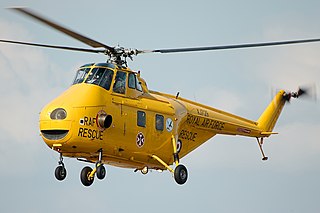 W
WThe Westland Whirlwind helicopter was a British licence-built version of the U.S. Sikorsky S-55/H-19 Chickasaw. It primarily served with the Royal Navy's Fleet Air Arm in anti-submarine and search and rescue roles.